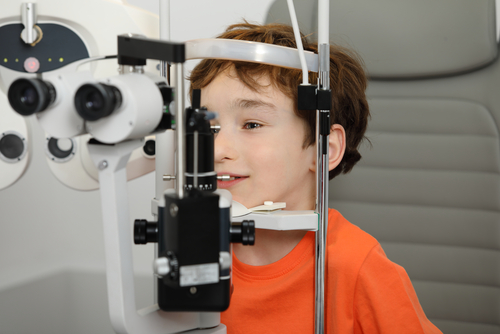
GENERAL INFORMATION
Myopia (nearsightedness) is a condition where distance vision is blurred more than near vision. High myopia tends to have a genetic component, with children having myopic parents, but there are also environmental influences. Children who spend more time outdoors and less time using electronic devices are LESS LIKELY to become myopic or continue to progress.
Between the early 1970s and the early 2000s, there has been a 17% increase in myopia. By current estimates, nearly 50% of the world’s population will be nearsighted by 2050! The good news is it may be possible to slow myopia progression during childhood and the teenage years to prevent long-term complications and vision loss due to myopia.
WHO IS A CANDIDATE?
Candidacy is dependent on several factors, but myopia control intervention can be considered for children who are nearsighted by the age of 6, children with myopic parents, and children with rapidly changing prescriptions.
The first step to myopia control is changing your environment. Children who spend under 2 hours per day playing outside have an increased risk of myopia.
WHY CONTROL MYOPIA?
In addition to having poor vision requiring stronger glasses, as your prescription increases it also stretches the internal structures of your eye leading to an increased risk of:
Retinal detachments (4 to 16 times) Cataracts (2 to 5 times)
Glaucoma (4 times)
The best way to take advantage of myopia control is to detect nearsightedness early. Even if your child is not complaining of vision problems, it’s important to schedule routine eye exams for your children, starting at 6 months of age.
Myopia typically progresses more rapidly in pre-teens during growth spurts, with prescriptions usually stabilizing between ages 18 and 21.
TREATMENT OPTIONS:
The purpose of myopia management is to limit the progression of myopia as much as possible. The goal is not to eliminate your child's near-sightedness so a correction is not needed. The goal is to slow down the progression so the final adult prescription is as low as possible.
There are a number of different options in myopia control to try and slow prescription progression, each with a different reduction in progression:
Distance glasses: 0-5%
Soft Multifocal Contact lenses: 29-49%








